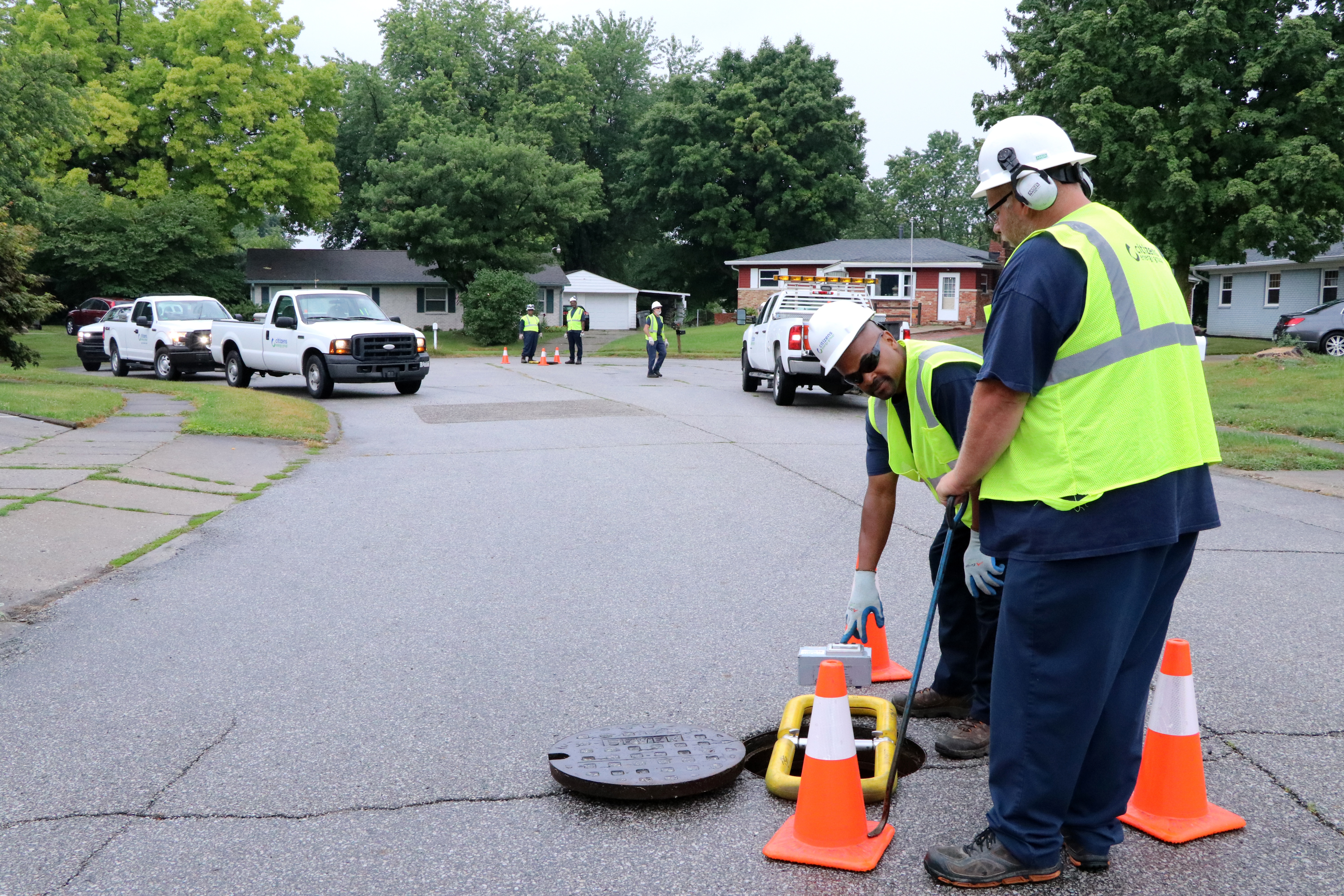
Wastewater Collections is inspecting and cleaning sewers more efficiently and cost effectively after recently implementing new technology.
Acoustic Condition Evaluation (ACE) equipment was assessed last August, and full use of the system began this spring.
The new process is increasing productivity by reducing the time it takes to assess sewer lines and determine if additional attention is necessary, including further inspection or cleaning. This allows for more effective work planning and resource utilization. Additionally, decreased drive time is minimizing fuel consumption and contributing to safety.
ACE uses a device to transmit sounds through the sewer between two manhole covers. An algorithm equates the amount of sound received to a degree of blockage, on a scale of 0 to10. The technology acts as a screening tool that helps prioritize lines for cleaning and more thorough inspection based upon the score the line receives. When a line scores low (0 to 2) follow-up is immediate, utilizing more sophisticated inspection tools (like pole cameras or closed circuit televising equipment) to determine the root cause of the low score and what corrective action is necessary.
“We are proactively prioritizing the oldest, most at-risk areas of our system,” said Tim Blagsvedt, Director Wastewater Collection. “As a result, we are finding issues and proactively correcting them before they cause huge problems for the public.”
The department assesses 1.4 million feet of sewer annually. Previously, sewers were inspected and cleaned based on a geographic rotation, regardless of need.
By using ACE, overall annual cleaning footage is being reduced from 1.4 million feet to an estimated 350,000 feet. Blagsvedt said it is estimated that approximately 75 percent of the line segments will produce a score that will indicate cleaning is not necessary.
The implementation of this technology has allowed Citizens Energy Group to reduce its fleet and labor costs, which will result in cost-savings of approximately $450,000 annually.


